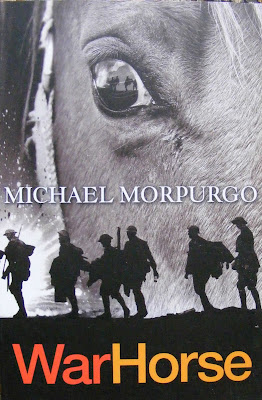A few years ago, when I was still a bookseller, I sold a copy of a book called The Horsemaster's Notebook by Mary Rose. I was quite surprised when I sold it, because although a good book in its own right, vintage equestrian non fiction doesn't usually sell as quickly as that book did. I wondered if the buyer had confused that book with today's PBOTD, Don Stanford's The Horsemasters (1957). Yes, they had, and the book made its way back to me with a rather indignant note that it hadn't been the book the buyer was expecting.
 |
| Funk & Wagnalls first edition, 1957 |
Sadly The Horsemasters is very difficult to find these days, so I do wonder if that buyer ever managed to track a copy down. I found my copy when a friend told me there was one going on eBay, and was I interested? It was the first British edition, illustrated by Michael Lyne. Of course I was (more than) interested, and I beetled off and put a bid on, not expecting for one moment I'd get the book. Mine was the only bid. I share that with you because I am not normally lucky on eBay, so that occasion does rather stick in my memory.
The Horsemasters shows equestrian training as it once was: intensely practical, extraordinarily hard work, and above all, short. No three year degree courses leaving their students horribly in debt. The Horsemaster's certificate was the precursor of the British Horse Society's BHSAI, the Assistant Instructor exam vital to equestrian employment. We join Don Stanford's book when the students have already been on the course for some weeks, and are thereabouts used to the sheer amount of work involved.
 |
| Harrap & Co; Co first UK edition, 1958 |
The main character in the story is American Dinah Willcox, who hopes to get a job as a riding instructor back home once she's finished the course. She, as well as the other horsemasters, have much to learn.
Besides having ample experience of the physical slog necessary for an equine career, they learn to ride better, and above all, learn that people, and horses, are not always what they seem.
 |
| Brockhampton, 1967 |
The Horsemasters was, as Don Stanford's preface to the book makes clear, based on the Porlock Vale Riding School. It was one of the most famous riding schools in England for decades, and was started by the Collings family in the 19th century, hiring out hunters. By the time Don Stanford was writing, the school was in the hands of Captain Tony Collings, who was instrumental in founding the Horse of the Year Show and Badminton Horse Trials, which he won in 1950.
 |
Puffin paperback, 1976
|
The Horsemasters was first published in America (although the book is set in England, the author was American) by Funk & Wagnalls in 1957. It was then published in the UK by Harrap in 1958, with illustrations by Michael Lyne. Further editions followed in both America and the UK, but I will cover just the British ones in this blog. Hodder & Stoughton published the book in its Hampton Library edition, with a cover by Lazlo Acs in 1967. White Lion (a division of Collins) published an edition in 1973, but sadly I have never managed to find a copy of this. The last British edition was by Puffin, a paperback with a wraparound cover illustration which appeared in 1976.
~ 0 ~
For more on Don Stanford, including the other American editions,
see his page on my website.





Comments